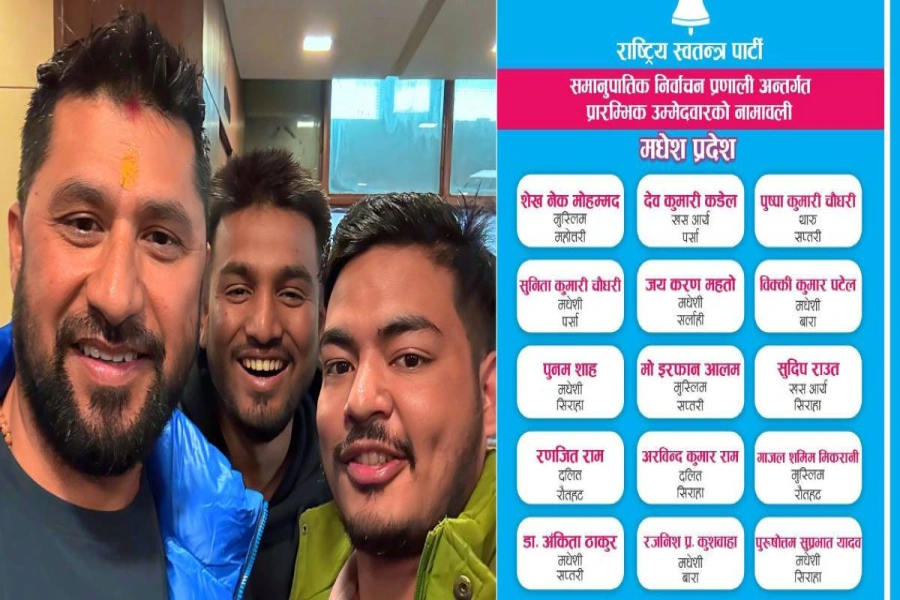Meditation, after all, has been globally appreciated for helping people become more peaceful, more focused, less anxious and more attentive to everything in their lives. Further, many also claim that meditation helps them better understand their own minds.
When you meditate, you need to spare at least an hour.
When you meditate, you have to sit in a particular posture.
When you meditate, there should be no thoughts running through your mind.
When you meditate, you need to have good concentration and laser-like focus.
Lila Lamichhane, meditation teacher at The Art of Living, has heard it all and she couldn’t be more against these misinterpretations. She is also well aware that these false ideas about meditation are keeping many people from giving it a try. Lamichhane stresses that while not many people can immediately adapt to the act of meditating, the fact still remains that anybody can do it with a little practice.
Lamichhane actually considers meditation one of the most important habits that she has formed in the last 10 years. Meditation, after all, has been globally appreciated for helping people become more peaceful, more focused, less anxious and more attentive to everything in their lives. Further, many also claim that meditation helps them better understand their own minds. Considering all these benefits it’s no wonder that it comes highly recommended.
However, in case, you too aren’t sure where to start, Lamichhane has some helpful tips. Here, she shares how she teaches those interested with their practical beginner’s guide to meditation sessions at The Art of Living trainings.
Setting the record straight
We have all heard how meditation utilizes focused breathing and mind exercises that are aimed at reducing heart rate, respiration and other signs of stress. We have also been told that when we meditate the goal is to unite the body, breath and mind. Now since it’s easy to be overwhelmed by this very idea, Lamichhane apparently always makes it a point to brief her new students. She debunks the myths and explains to them exactly how the task is completely achievable. The trick is to take it step by step and also understand that there isn’t only one particular way to meditate.
According to Lamichhane, the desire to meditate must come from within. One must be serious about their attempts and, when they are, they will discover that they have many options to explore. Lamichhane also strongly believes that the practice of meditation is easier to grasp when there is someone guiding you through the basics.
Vipassana Diplomacy: A Path to Peaceful World Order- I

Practice leniency
More often than not, attempts at meditation fail because people tend to be too strict with themselves. “There is a common misconception that you need to sit for hours on end and often, in our busy lives, this just isn’t possible,” says Lamichhane. She recommends that beginners start off with just 10 minutes of meditation a day. However, make it a point to limit distractions – find a quiet place where other people won’t disturb you and leave your phone in another room or keep it in silent mode so you won’t be interrupted by texts or Facebook notifications.
Also don’t assume that you have to abide by rigid meditation postures. There is no need to tolerate aches and cramps. Try to be as comfortable as you can. As long as you are not lying down (since we don’t want you to doze off), you can sit in any relaxed position.
You can even simply sit upright in a chair with both feet planted on the ground and both arms at your sides or resting on your thighs. Even closing your eyes is an option. If you want, you can choose to leave them open as well.
And last but not the least, Lamichhane shares that too many people emphasize on the importance of having a blank mind while meditating. But this, according to her, is impossible. She explains that even while meditating thoughts are bound to drift in and out of your head and that’s completely okay. We can consciously decide to get the mind back on track.
The power of combining exercise and meditation
Many people tend to meditate after vigorous workout sessions to regulate their breathing and soothe their aching muscles. This is the norm. However, physical exercise before sitting down to meditate has also been helpful to people.
Lamichhane reveals that her meditating sessions at The Art of Living meetings always begin with some light physical activity. She recommends we stretch, jog around a little, and warm up with some simple yoga poses such as the surya namaskar because when our body relaxes, it’s easier to relax our minds as well. Also since light exercise helps with our blood circulation, when we sit to meditate we will be more alert and less likely to slip into stupor.
Chants and sound vibrations
Breathe better and you will live better, they say. So it is no surprise that breathing is a very important aspect of meditation. It is believed to be the bridge between your body and your mind. If you learn to regulate your breathing, you can regulate your mind and emotions as well. Lamichhane explains that they specifically conduct multiple day sessions to teach their students the right breathing techniques as well as brief them about its importance. There are said to be many unique rhythms of breathing that are associated with different forms of meditation.
For those who are trying meditation on their own though, Lamichhane suggests chanting. Even at The Art of Living sessions, they tend to give a mantra to each participant. It has been found that sound vibrations help people get into meditation much more effectively.
“We have many layers of consciousness and chants affect them in a positive way,” says Lamichhane adding that sound vibrations help suppress and shake off unwanted repetitive thoughts that tend to plague us on a daily basis. So she concludes mantras can be used as a tool to aid our meditation sessions.
(As told to Priyanka Gurung)


































